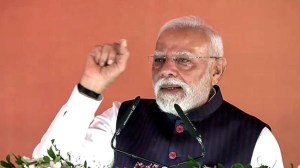15-yr-old twins lead a medical odyssey against diabetes
On october 3, 2005, the eve of Rosh Hashana, Ali and Marissa Newman and their parents...

On october 3, 2005, the eve of Rosh Hashana, Ali and Marissa Newman and their parents, Stacey and Rick, drove from their home here to Long Island to have dinner with cousins. It was supposed to be a pleasant holiday, a time to be with family and to celebrate the Jewish New Year in a temple.
But for Ali and Marissa, 13-year-old twin sisters, the holiday was the beginning of a medical odyssey that would turn their lives upside down. One would learn she has Type 1 diabetes; the other would become the first person enrolled in a multinational study aimed at delaying or preventing the disease in some patients.
The trouble had begun a month earlier, when Ali came home from a summer camp unexpectedly thin, having lost about 10 pounds. She had also been unusually tired, falling asleep in the car.
Ali’s weight loss was so troubling that her friends and a school nurse had confronted her, wanting to know if she had an eating disorder. Her parents could not stop asking what was wrong; Ali, increasingly frustrated at being accused, could not give them an answer.
Marissa, who had been worried about her sister for weeks, stayed up one night, watching Ali as she slept. Ali woke twice and went to find her father, who gave her cold medicine and an inhaler to ease her breathing. But the third time she woke, when she said she could not make it down the hall, Marissa told her parents that they had to get Ali to the hospital.
No one knew that Ali had developed Type 1 diabetes. By the time she reached the emergency room at 3 am, she was in diabetic ketoacidosis, a life-threatening condition in which extremely high blood sugar causes an imbalance in blood chemicals.
Ali’s diagnosis sent a shock wave through every member of the Newman family. And it threw Marissa’s future into question: As Ali’s twin, she now learned, she could be at risk of developing the disease. Type 1 diabetes, known as juvenile diabetes, is not governed by lifestyle. It is an autoimmune disorder in which the body attacks the beta cells in the pancreas that produce the hormone insulin.
Everyone with the disease is born with a genetic susceptibility to it, though only a small minority of those with the predisposition actually develop diabetes, probably as a result of an environmental trigger. For this reason, those in the greatest danger of developing Type 1, with more than a 50 per cent risk, are identical twins of those who have it. Next, at a much lower risk, are children of men with Type 1, followed by those whose mothers or non-twin siblings have the disease. Fraternal twins like Ali and Marissa are at the same level as non-twin siblings.
When Leibel asked to screen Marissa for her risk for Type 1, she agreed. And when she was found to be at moderate risk, Marissa became the first person to enroll in an oral insulin study being run by the Type 1 Diabetes TrialNet, a network of diabetes research centres.
The study, supported by the National Institutes of Health, began enrolling subjects last February. It uses insulin pills to try to delay or prevent Type 1 diabetes in people who have close relatives with the disease and are themselves at risk.
Marissa and Ali, now 10th-graders at Scarsdale High School, are a study in differences. Ali, a varsity cheerleader, is voluble and opinionated, and Marissa, who studies theater tech and design, is more reserved, with a sharp eye and a dry sense of humor. Yet they have a powerful, obvious closeness — what they call a “twin sense.”
So for Marissa, the decision to be tested for autoantibodies and to enter the oral insulin trial was simple.
Marissa said she was never afraid of learning her own risk. “I’d rather know what I’m dealing with,” she said. “If I don’t know something, that makes me scared.”





- 01
- 02
- 03
- 04
- 05


























